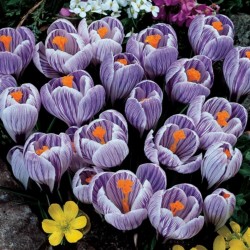Menu
-
MenuVissza
- Home
-
Kategóriák
-
-
Kategóriák
-
Zöldségmagok
-
Fajták országonként
- Fajták Örményország
- Fajták BiH
- Fajták Horvátországból
- Fajták Franciaországból
- Varieties from Germany
- Varieties from Greece
- Varieties from Hungary
- Fajták India
- Varieties from Italy
- Fajták Japánból
- Fajták Észak-Macedónia
- Varieties from Peru
- Varieties from Russia
- Varieties from Serbia
- Szlovéniából származó fajták
- Varieties from Spain
- Varieties from Thailand
- Fajták Törökország
- Varieties from USA
- Paradicsommag
- Kukoricamag
- Tök család magjai
- Babcsalád
- Uborka mag
- Paprikamag
- Sárgarépa család
- Hagyma család
- Saláta magok
- Burgonya család
- Káposzta család
- Retekmag
- Cékla család
- Görögdinnye magok
- Dinnye magok
- Karfiolmag
- Napraforgó család
-
Fajták országonként
- Gyümölcsmag
- Chili paprika magok
- Gyógynövénymagok
- Hegymászó növények magjai
- Fák - cserje - magok
- Pálma mag
- Díszes fűmagok
- Dohánymagok
-
Zöldségmagok
-
-
-
-
- ÚJ TERMÉKEK
- Fiók létrehozása
- Szállítás - fizetés
- FAQ
Last Product Reviews
Out of the two seeds, one germinated and the other one was dead and floatin...
By
 Riikka H on 07/03/2024
Riikka H on 07/03/2024
Verified Purchase
130 termék található.
76-90 / 130 elem mutatása

Óriás növény (óriás gyümölcsökkel)

Spanyolországból származó fajta
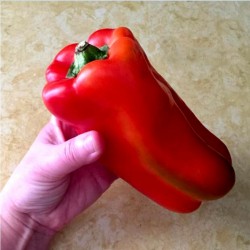
Largo de Reus sweet bell...
Ár
1,80 €
(SKU: P 43)
Seeds Gallery EU,
5/
5
<h2><strong>Largo de Reus sweet bell pepper Seeds</strong></h2>
<h2><span style="color: #ff0000;"><strong>Price for Package of 10 seeds.</strong></span></h2>
<p>Largo de Reus from Spain is a huge sweet bell pepper from Spain. The aromatic, red pods can reach lengths up to 20 cm.</p>
<p>The variety generates vigorous plants 50/60 cm high, with abundant foliage bright green in color, and bearing numerous fruits, the fruits are compact thick-walled, and juicy.</p>
<p>They are ideal as raw food in the salad, for roasting, stewing, grilling, and stuffing. The plants are prolific and support is recommended…</p>
<hr />
<h3><i><b>About Capsicum annuum</b></i></h3>
<p><i><b>Capsicum annuum</b></i><span> is a species of the plant genus </span><i>Capsicum</i><span> (chillies or peppers and capsicums or bell peppers) native to southern </span>North America<span> and northern </span>South America<span>.</span><sup id="cite_ref-GRIN_1-1" class="reference">[1]</sup><sup id="cite_ref-4" class="reference">[4]</sup><span> This species is the most common and extensively cultivated of the five domesticated capsicums. The species encompasses a wide variety of shapes and sizes of peppers, both mild and hot, such as </span>bell peppers<span>, </span>jalapeños<span>, </span>New Mexico chile<span>, and </span>cayenne peppers<span>. Cultivars descended from the wild American bird pepper are still found in warmer regions of the Americas.</span><sup id="cite_ref-5" class="reference">[5]</sup><span> In the past, some woody forms of this species have been called </span><i>C. frutescens</i><span>, but the features that were used to distinguish those forms appear in many populations of </span><i>C. annuum</i><span> and are not consistently recognizable features in </span><i>C. frutescens</i><span> species.</span></p>
<h2><span class="mw-headline" id="Characteristics">Characteristics</span></h2>
<p>Although the species name<span> </span><i>annuum</i><span> </span>means “annual” (from the<span> </span>Latin<span> </span><i>annus</i><span> </span>"year"), the plant is not an<span> </span>annual<span> </span>but is frost tender.<sup id="cite_ref-rhs_7-0" class="reference">[7]</sup><span> </span>In the absence of winter frosts it can survive several seasons and grow into a large, shrubby<span> </span>perennial<span> </span>herb.<sup id="cite_ref-SpicePages_8-0" class="reference">[8]</sup><span> </span>The single flowers are an off-white (sometimes purplish) color while the stem is densely branched and up to 60 cm (24 in) tall. The fruit are<span> </span>berries<span> </span>that may be green, yellow, orange or red when ripe.<sup id="cite_ref-Development2006_9-0" class="reference">[9]</sup><span> </span>While the species can tolerate most frost-free climates,<span> </span><i>C. annuum</i><span> </span>is especially productive in warm and dry climates.<sup class="noprint Inline-Template Template-Fact">[<i><span title="This claim needs references to reliable sources. (December 2017)">citation needed</span></i>]</sup></p>
<h2><span class="mw-headline" id="Pollination">Pollination</span></h2>
<p>While generally self-pollinating, insect visitation is known to increase the fruit size and speed of ripening, as well as to ensure symmetrical development. Pepper flowers have nectaries at the base of the corolla, which helps to attract pollinators. The<span> </span>anthers<span> </span>do not release pollen except via<span> </span>buzz pollination, such as provided by<span> </span>bumble bees.<sup id="cite_ref-10" class="reference">[10]</sup></p>
<h2><span class="mw-headline" id="Uses">Uses</span></h2>
<h3><span class="mw-headline" id="Culinary">Culinary</span></h3>
<div class="thumb tright">
<div class="thumbinner"><img alt="Largo de Reus sweet bell pepper Seeds" src="https://upload.wikimedia.org/wikipedia/commons/thumb/b/ba/Five-Peppers-Colors-1.jpg/220px-Five-Peppers-Colors-1.jpg" decoding="async" width="220" height="98" class="thumbimage" srcset="//upload.wikimedia.org/wikipedia/commons/thumb/b/ba/Five-Peppers-Colors-1.jpg/330px-Five-Peppers-Colors-1.jpg 1.5x, //upload.wikimedia.org/wikipedia/commons/thumb/b/ba/Five-Peppers-Colors-1.jpg/440px-Five-Peppers-Colors-1.jpg 2x" data-file-width="3280" data-file-height="1456" title="Largo de Reus sweet bell pepper Seeds" />
<div class="thumbcaption">
<div class="magnify"></div>
Five colors of peppers in an Israeli supermarket</div>
</div>
</div>
<p>The species is a source of popular sweet peppers and hot chilis with numerous varieties cultivated all around the world, and is the source of popular spices such as<span> </span>cayenne,<span> </span>chili, and<span> </span>paprika<span> </span>powders.</p>
<p>Common naming in English falls generally in line with the flavor and size of the variant. Larger, sweeter variants are called "capsicums" in Australia and New Zealand and red or green peppers,<sup id="cite_ref-11" class="reference">[11]</sup><span> </span>or<span> </span>"bell peppers"<span> </span>in the United States and Great Britain.<sup id="cite_ref-12" class="reference">[12]</sup><sup id="cite_ref-morrisons_13-0" class="reference">[13]</sup><span> </span>The smaller, hotter varieties are called chillis,<sup id="cite_ref-14" class="reference">[14]</sup><span> </span>chilies, chile, or chili peppers, or in parts of the US, "peppers".</p>
<p>Capsinoid<span> </span>chemicals provide the distinctive tastes in<span> </span><i>C. annuum</i><span> </span>variants. In particular,<span> </span>capsaicin<span> </span>creates a burning sensation ("hotness"), which in extreme cases can last for several hours after ingestion. A measurement called the<span> </span>Scoville scale<span> </span>has been created to describe the hotness of peppers and other foods.</p>
<h3><span class="mw-headline" id="Traditional_medicine">Traditional medicine</span></h3>
<p>Hot peppers are used in<span> </span>traditional medicine<span> </span>as well as food in<span> </span>Africa.<sup id="cite_ref-prota_15-0" class="reference">[15]</sup><span> </span>English botanist<span> </span>John Lindley<span> </span>described<span> </span><i>C. annuum</i><span> </span>in his 1838<span> </span><i>Flora Medica</i><span> </span>thus:<sup id="cite_ref-16" class="reference">[16]</sup></p>
<blockquote class="templatequote">
<p>It is employed in medicine, in combination with<span> </span><i>Cinchona</i><span> </span>in intermittent and lethargic affections, and also in atonic<span> </span>gout,<span> </span>dyspepsia<span> </span>accompanied by<span> </span>flatulence,<span> </span>tympanitis,<span> </span>paralysis<span> </span>etc. Its most valuable application appears however to be in<span> </span><i>cynanche maligna</i><span> </span>(acute<span> </span>diphtheria) and<span> </span><i>scarlatina maligna</i><span> </span>(malignant<span> </span>Scarlet fever, used either as a<span> </span>gargle<span> </span>or administered internally.)</p>
</blockquote>
<p>In<span> </span>Ayurveda,<span> </span><i>C. annuum</i><span> </span>is classified as follows:</p>
<ul>
<li><i>Guna</i><span> </span>(properties) –<span> </span><i>ruksha</i><span> </span>(dry),<span> </span><i>laghu</i><span> </span>(light) and<span> </span><i>tikshna</i><span> </span>(sharp)</li>
<li><i>Rasa</i><span> </span>(taste) –<span> </span><i>katu</i><span> </span>(pungent)</li>
<li><i>Virya</i><span> </span>(potency) –<span> </span><i>ushna</i><span> </span>(hot)</li>
</ul>
<h3><span class="mw-headline" id="Ornamental">Ornamental</span></h3>
<p>Some cultivars grown specifically for their aesthetic value include the<span> </span>U.S. National Arboretum's<span> </span>'Black Pearl'<sup id="cite_ref-17" class="reference">[17]</sup><span> </span>and the 'Bolivian Rainbow'. Ornamental varieties tend to have unusually colored fruit and foliage with colors such as black and purple being notable. All are edible, and most (like 'Royal Black') are hot.</p>
<h2><span class="mw-headline" id="Host_plant">Host plant</span></h2>
<p>The potato tuber moth (<i>Phthorimaea operculella</i>) is an oligophagous insect that prefers to feed on plants of the family Solanaceae such as pepper plants. Female<span> </span><i>P. operculella</i><span> </span>use the leaves to lay their eggs and the hatched larvae will eat away at the mesophyll of the leaf.</p>
P 43 (10 S)


Óriás növény (óriás gyümölcsökkel)

Olasz fajta

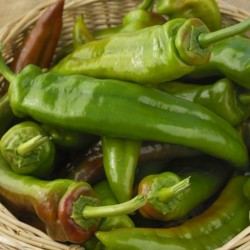
Italian Giant long Sweet...
Ár
1,75 €
(SKU: PP 44)
Seeds Gallery EU,
5/
5
<h2><strong>Italian Giant long Sweet Pepper Seeds</strong></h2>
<h2><span style="color: #ff0000;"><strong>Price for Package of 10 seeds.</strong></span></h2>
<p>The plant is high yield gives a lot of long and pointed fruits that can reach up to 8 cm in diameter in their thickest part by 20 cm in length. Plants reach a height from 40 to 50 cm. The best feature of this variety is its sweetness, and it is one of the best varieties for fried pepper. Thick to the medium thickness of about 3 mm. Excellent variety for growing in open fields and in pots.</p>
PP 44 (10 S)


Óriás növény (óriás gyümölcsökkel)

Észak-Macedóniából származó fajta
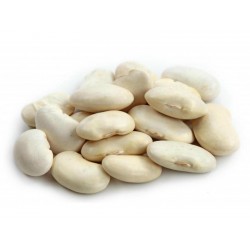
Tetovac big white Bean Seeds
Ár
1,25 €
(SKU: VE 145 (11g))
Seeds Gallery EU,
5/
5
<h2><strong>Tetovac big white Bean Seeds</strong></h2>
<h2><span style="color: #ff0000;" class=""><strong>Price for Package of 20 seeds.</strong></span></h2>
<p>Beans Tetovac is extremely big. The most popular beans in Serbia. One of the best and oldest varieties of beans in Serbia and Macedonia. It is the old, original variety Tetovac, which hardly anyone today has in Serbia. Today you can find Tetovac beans in any store. But what kind of? Tetovac which is sold in stores is generally hybridized and even imported from China. Also, seeds are smaller and thinner.</p>
<p>Our Tetovac is the old original variety.</p>
<p>This variety comes from the Macedonian town of Tetovo area.</p><script src="//cdn.public.n1ed.com/G3OMDFLT/widgets.js"></script>
VE 145 (11g)


Óriás növény (óriás gyümölcsökkel)
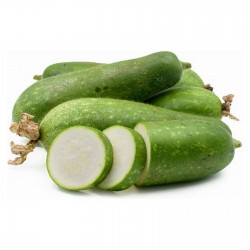
Wax gourd seeds (Benincasa...
Ár
2,25 €
(SKU: VE 225)
Seeds Gallery EU,
5/
5
<h2 class=""><strong>Wax gourd seeds (Benincasa hispida)</strong></h2>
<h2><span style="color: #ff0000;"><strong>Price for Package of 10 seeds.</strong></span></h2>
<p>Benincasa hispida, the wax gourd, also called ash gourd, white gourd, winter gourd, tallow gourd, ash pumpkin, and winter melon and “Chinese preserving melon” is a vine grown for its very large fruit, eaten as a vegetable when mature.</p>
<p>It is the only member of the genus Benincasa. The fruit is fuzzy when young. The immature melon has thick white flesh that is sweet when eaten. By maturity, the fruit loses its hairs and develops a waxy coating, giving rise to the name wax gourd, and providing a long shelf life. The melon may grow as large as 80 cm in length. It has yellow flowers and broad leaves. The taste is rather bland.</p>
<p>It is native to South Asia and Southeast Asia. The wax gourd is widely grown throughout Asia, including Java and Japan, the places where it is thought to have originated.</p>
<p>The name “winter melon” that is sometimes given to this plant is based on the Chinese name dōngguā (冬瓜), however, the character 瓜 (guā) can also mean “gourd” or “squash”. It is likely that the name “melon” is given because this gourd is sometimes candied or made into a sweet tea; see the Uses section below.</p>
<p><strong>Cultivation</strong></p>
<p>It is grown in well-drained loam and sandy soils, in warm mild climates, but will not tolerate frosts. The crops are grown in riverbeds or furrows, and needs constant irrigation during the growing season.</p>
<p><strong>Uses</strong></p>
<p>The wax gourd requires very warm weather to grow but can be stored for many months much like winter squash. Ash gourds of the Indian subcontinent have a white coating with rough texture (hence the name ash gourd, literally, in some vernaculars). South East Asian varieties have a smooth waxy texture. It is one of the few vegetables available during winter in areas of deciduous vegetation, hence its Chinese name literally means 'winter gourd'. The Wax Gourd can typically be stored for 12 months. In India, the wax gourd is recognized for its medicinal properties in the Ayurvedic system of medicine.[8] It is also has significance in spiritual traditions of India and Yoga, where it is identified as a great source of Prana.</p>
<p>In Vietnamese cuisine, it is called bí đao, which is usually used to make soup or stew.[11] When cooked with pork short ribs, the resulting soup is traditionally thought to help produce more milk for breastfeeding mothers.</p>
<p>In Chinese cuisine the gourds are used in stir fry or usually combined with pork or pork/beef bones to make winter gourd soup, often served in the scooped out gourd, carved by scraping off the waxy coating. It is also chopped and candied[12][unreliable source?] as wintermelon candy (táng dōng guā) to be commonly eaten at New Year festivals, or as filling for Sweetheart cake (lǎopó bǐng). It has also been used as the base filling in Chinese and Taiwanese mooncakes for the Moon Festival.</p>
<p>In the Philippines it is candied (referred to plainly as kundol) and is used as a pastry filling for bakpia (hopia in the Philippines). It is also an ingredient in some savory soups (sabaw) and stir-fries (guisado).</p>
<p>In Indian cuisine this gourd is traditionally used to prepare a wide variety of dishes. In northern India it is used to prepare a candy called petha. In South Indian cuisine, it is traditionally used to make a variety of curries, including a stew made with a yogurt base.[13] The juice of raw ash gourd(Maipawl) is used by the Mizo community of North-East India as a natural remedy to treat mild to severe dysentery. In north India, particularly in middle Himalayas, it is paired with pulses such as moong which when squashed along with winter gourd results in the making of a dish locally called bari. When dried in the cool winter sunlight it becomes somewhat hard and is used as a curry dish and eaten along with rice or chapati. This practice is done in Himalayas for quite a long time as people in mountains depend upon nature to help them survive harsh winters. This bari is a great source of iron and vitamins and eaten diversely in the mountains.</p>
<p>In Andhra Pradesh, it is called "boodidi gummidikaya" (Telugu language). It is used to make stews, stir fry and vadialu. Vadialu (plural; vadiam is singular) are made by chopping the gourd in small pieces and mixing with yogurt and spices, then sun-drying. To eat, vadiams are deep fried in oil and eaten as an accompaniment to rice and sambar (dish) or lentil stews.</p>
<p>In Kerala, the plant is called Kumbalam (കുമ്പളം) and the fruit is called Kumbalanga (കുമ്പളങ്ങ) or Kooshmandam (കൂശ്മാണ്ടം). It is traditionally used to offer 'Guruthi' (ഗുരുതി) instead of 'Kuruti' (കുരുതി) among Malayali Brahmins. It means, instead of offering someone's life in the pier, an ash gourd is cut into two as a symbolic performance in lieu human sacrifice.</p>
<p>In the Gujarat, is called kolu (કોળુ).</p>
<p>In Nepal, where it is called Kubhindo, it is cooked as a vegetable when young, but the ripe gourds are usually popular in making preserves or crystallized candied sweet known as "murabba" or "petha".[14][unreliable source?]</p>
<p>Occasionally, it is used to produce a fruit drink with a very distinctive taste. It is usually sweetened with caramelized sugar. In Southeast Asia, the drink is widely marketed as wax gourd tea or wax gourd punch.</p>
<p>The shoots, tendrils, and leaves of the plant may also be eaten as greens.</p>
VE 225 (10 S)


Óriás növény (óriás gyümölcsökkel)

Olasz fajta
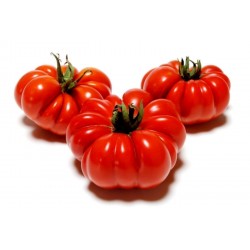
Tomato seeds Large...
Ár
2,00 €
(SKU: VT 50)
Seeds Gallery EU,
5/
5
<!DOCTYPE html>
<html>
<head>
<meta http-equiv="Content-Type" content="text/html; charset=UTF-8" />
</head>
<body>
<h2><strong>Tomato seeds Large beefsteak Costoluto Fiorentino</strong></h2>
<h2><span style="color: #ff0000;"><strong>Price for Package of 10 seeds.</strong></span></h2>
<p>Old variety from Italy, tomato Costoluto Fiorentino. Large heirloom beefsteak type from Florence. Red, an average of 350-450 grams but fruits can reach a weight of 1 kg slightly flattened fruit. Outstanding taste. 75-80 days. Large vigorous Indeterminate plant with good production. This makes a really nice sauce also, especially the quickly cooked type.</p>
</body>
</html>
VT 50 (10 S)


Óriás növény (óriás gyümölcsökkel)
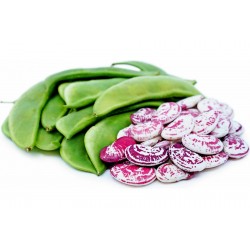
Giant Christmas Lima beans...
Ár
2,55 €
(SKU: VE 118)
Seeds Gallery EU,
5/
5
<h2><strong>Giant Christmas Lima beans seeds</strong></h2>
<h2><span style="color: #ff0000;"><strong>Price for Package of 5 seeds.</strong></span></h2>
<p>Originated in Peru, first recognized in the 1840s. This bean is also known as Chestnut Bean because of its flavor. The maroon markings remain even after cooking. Christmas Limas are now adapted to the high desert region of the American Southwest.</p>
<p><strong>Description/Taste</strong></p>
<p>Christmas Lima beans are tucked inside of a wide, curved and flat roughly four-inch green pod speckled with earthy brown tones. The pod is easily opened at its stringless seam, revealing three tender and semi-succulent creamy white beans that are variegated with raspberry-colored patterns. Eventually, the beans will harden and dry, their coloring reversing, with more of the beans' surface covered with tones of burgundy with white speckles. The flavor of Christmas Lima beans is buttery, sweet and reminiscent of chestnuts.</p>
<p><strong>Seasons/Availability</strong></p>
<p>Christmas Lima beans are appropriately available from fall to late winter.</p>
<p><strong>Current Facts</strong></p>
<p>Christmas Lima beans, Phaseolus lunatus, are defined in culinary terms, as a legume, their appearance as a pole bean merely serving the purpose of the pod securing the beans inside through maturity. Unlike snap beans, the pod is not eaten. Christmas Limas are an heirloom variety of Lima beans, their place within the commercial market quite rare, especially because they are mainly grown as a fresh shelling bean and most legumes are grown and processed as a dry or canned bean.</p>
<p><strong>Applications</strong></p>
<p>Christmas Lima beans do not require soaking. They can be simply rinsed prior to preparation. They can be treated as a fresh shelling bean or a dry bean, thus their cooking time will vary depending on their age. Christmas Lima beans compliment a variety of flavors and dishes from season to region. Hearty Winter stews, spicy soups, and bright, fresh Spring salads are each enhanced by Christmas Lima beans' buttery texture and nutty flavor. Christmas Limas are rich enough to stand up to curries and chiles, indulgent meats such as lamb and pork. They can also be prepared simply with the addition of olive oil, fresh herbs such as mint, cilantro, and basil. Perfect companion ingredients include garlic, forest mushrooms and fresh hulled corn along with cheeses like feta and gorgonzola.</p>
<p><strong>Geography/History</strong></p>
<p>Christmas Lima beans were named for Lima, Peru, the capital city that they were first cultivated in the 19th Century, although their exact origins are unknown. Christmas Limas perform best in similar climates that other pole beans thrive in. Their growing season is boosted by warm soil, arid climates and long sunny days. Regions throughout the Americas create abundant harvests of the Christmas Lima bean, though their commercial recognition is nearly obsolete. They have actually been listed as an endangered heirloom vegetable variety, at risk of becoming void of the food chain - this status is designed to promote and encourage the Christmas Lima to be grown by farmers and gardeners, to ensure they remain in production and in turn continue to be appreciated by consumers for decades and centuries to come.</p>
<script src="//cdn.public.n1ed.com/G3OMDFLT/widgets.js"></script>
VE 118 (5 S)


Óriás növény (óriás gyümölcsökkel)

Japánból származó változat

SAKURAJIMA DAIKON Giant...
Ár
2,45 €
(SKU: VE 208)
Seeds Gallery EU,
5/
5
<h2><strong>SAKURAJIMA DAIKON Radish Seeds – Largest Radish in the World</strong></h2>
<h2><span style="color: #ff0000;"><strong>Price for Package of 10 seeds.</strong></span></h2>
<p>The Sakurajima Radish is known as the “Largest Radish in the World.” It has produced radishes at a standard weight of 13 pounds and is capable of reaching 100 pounds! This traditional variety of daikon radish has a round basketball-like shape, unlike its longer and skinnier daikon relatives. Daikon radishes were introduced to Japan over 1,300 years ago, and there are over 120 varieties with unique characteristics cultivated regionally. During the Edo Period (1603-1868), daikons became extremely popular, and today 90% of daikons are produced and consumed in Japan. However, the regional varieties have slowly been replaced by the F1 hybrid variety called Aokubi. Aokubi and other F1 hybrids now account for the majority of the daikon production.</p>
<p>The Sakurajima Radish represents one of the few regionally cultivated varieties of daikon still being grown in Japan. Named after its place of cultivation, the former island of Sakurajima in Japan's Kagoshima Prefecture, the radish is thought to have been grown since at least 1804 and most likely before this date. Sakurajima was the southernmost island in the Kagoshima Prefecture with volcanic soils where rice would not thrive. In place of rice, the mammoth white radish was grown in mass amounts as a commercial crop and hauled to Kagoshima City to trade for straw. At the height of its production, as much as 500 acres would be planted each year. </p>
<p>Although the region has a long history of volcanic activity that began to impact the production of this magnificent radish. Sakurajima is a composite of mountains with three peaks that express volcanic activity. The first recorded volcanic eruption occurred in 963 A.D. Smaller eruptions occur constantly. Sometimes 1,000 eruptions can occur in a year, although larger eruptions have been recorded in the 1400s, 1700s and more recently in 1914.</p>
<p>The 1914 eruption instigated lava flows that lasted for months. The lava connected Sakurajima Island to the Osumi Penninsula by a thin isthmus, attaching it to the mainland and taking away its island status. The enormity of the 1914 eruption significantly decreased the land available to grow the staple crop. Since 1955, ash has been dropping consistently and has created challenging growing conditions. As a result, the growing area was decreased to as little as 3.5 acres by 2001. In August of 2015, the Japanese Meteorological Agency gave the volcano a Level 3 (Orange Alert), warning people that the volcano is active and should not be approached.</p>
<p>As a traditional crop, it continues to have a key role in Japanese cuisine. Sakurajima Radish can be pickled in a salt brine and used as a tsukemono, or “pickled things.” The large radish is known for having a sweeter and firmer flesh than other daikon varieties. It also stores well in potato-like storage conditions. Therefore, it is well suited for simmering and for being used in soups, as it will keep its structure and firm texture. While the Sakurajima Radish is no longer a key commercial crop of the region, it remains a beloved traditional crop. Recently the growing area has begun to expand again for its production.</p>
VE 208 (10 S)


Óriás növény (óriás gyümölcsökkel)
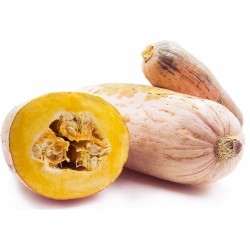
Squash Seeds Jumbo Pink Banana
Ár
1,95 €
(SKU: VG 8)
Seeds Gallery EU,
5/
5
<h2><strong>Squash Seeds Jumbo Pink Banana</strong></h2>
<h2><span style="color: #ff0000;" class=""><strong>Price for Package of 5-10 (1g) seeds.</strong></span></h2>
<p>A rarely seen winter squash variety in the UK, this is an impressive and reliable producer of huge fruits even in poor UK summers. The vines have the potential to grow to 20ft in any direction but are easily contained by turning them back to the centre. Large, pink banana-shaped fruit are produced in abundance and average 15-20lb but can easily grow to 50-60lb (4ft long) during good summers with care. The fruits are fine flavoured, dry with sweet orange flesh and store well in a cool frost-free location.</p>
<p><strong>SUMMER SQUASH / COURGETTE / ZUCCHINI</strong></p>
<p><strong> SOIL / LOCATION</strong></p>
<p>· A sunny spot protected from strong winds is essential.</p>
<p>· The soil should be well-drained and rich in humus, the more the better. When preparing the site; for bush varieties (Courgettes) allow 24in between each plant and for trailing varieties 36 – 48in.</p>
<p><strong> SOWING AND PLANTING</strong></p>
<p>· For an early start (late Mar) place a single seed edgeways 1/2inch deep in seed compost in a 3inch pot. The critical part is temperature, these need at least 65F continuous soil temperature (preferably more to maximise germination rates) until germinated, so a propagator, well-heated greenhouse or airing cupboard is ideal - gradually harden off seedlings after the last frost before planting outdoors. The most common reason for poor / zero germination is low/uneven soil temperature coupled with too much moisture.</p>
<p>· Outdoors you can plant from around late May in southern areas if warm ( The larger seed types are still best sown in a pot to guarantee germination and soil temperature which needs to be 65F+). We would also advise planting up to 3 seeds per hole and thinning to the strongest, as you have less time to plant more if any fail. Make sure you protect the seedlings as they emerge, slugs and snails will love them.</p>
<p><strong> WATERING, WEEDING AND MAINTENANCE TIPS</strong></p>
<p>· Keep the soil moist – water copiously around the plants, not over them.</p>
<p>· Keep weed-free to allow air circulation.</p>
<p>· Once the plants start to fruit, feed every 14 days with a tomato type fertilizer, these are greedy plants.</p>
<p><strong> HARVESTING AND STORAGE TIPS:</strong></p>
<p>· These will fruit early and rapidly become prolific, as the bush/vines grow. For most summer squash the key thing is to pick the fruit small and tender and they will keep fruiting all summer until the first frost. A knife is best to remove the fruit.</p>
<p>· If any fruit get to big, cut and discard to encourage new flowers.</p>
<p>· Some people are allergic to the tiny bristles/spines on courgette leaves. If in doubt wear gloves.</p>
<p>· Leave the last courgettes of the season to swell and they can be harvested as small marrows.</p>
<p>· Courgettes/summer squash do not keep well for more than a week; there again you will need to be eating them quick to keep up with production.</p>
<p>· For spaghetti squash – keep harvesting when around 10 inches. These will store for 6-8 weeks max if kept cool and dry.</p>
<p><strong>WINTER SQUASH / PUMPKIN</strong></p>
<p><strong> SOIL / LOCATION</strong></p>
<p></p>
<p>· A sunny spot protected from strong winds is essential.</p>
<p>· The soil must be well drained and rich in humus, the more the better. I fill each hole at least 12” square with garden compost and paper at the bottom into which goes a single plant. For bush varieties 24in between each plant is fine – 48in for vines.</p>
<p>· Many winter Squash / Pumpkins like to sprawl out and need plenty of space. Vining Squash / Pumpkins require a larger area to run, whilst semi-vining and bush varieties of winter squash / courgette can be well contained. If space is tight just keep turning the branches back to the centre to prevent spreading and over-running other plants.</p>
<p><strong> SOWING AND PLANTING</strong></p>
<p>· For an early start (Mid / Late Apr) place a single seed edgeways 1/2inch deep in seed compost in a 3inch pot. The critical part is temperature, these need at least 65F continuous soil temperature (preferably more to maximise germination rates) until germinated, so a propagator, well heated greenhouse or airing cupboard is ideal - gradually harden off seedlings after the last frost before planting outdoors. The most common reason for poor / zero germination is low / uneven soil temperature coupled with too much moisture.</p>
<p>· Outdoors from around Jun you can plant direct if the weather is warm, however I would advise planting up to 3 seeds per hole and thinning to the strongest, as you have less time to plant more if any fail. Also the plants will struggle with the shorter growing period if it is a poor wet summer.</p>
<p><strong> WATERING, WEEDING AND MAINTENANCE TIPS</strong></p>
<p>· Keep the soil moist – water copiously around the plants, not over them.</p>
<p>· Placing a mulch / black polythene before the fruit formation helps later on keeping the fruit clean and ripening.</p>
<p>· Keep weed free to allow air circulation.</p>
<p>· Once the fruits start to swell feed every 14 days with a tomato type fertilizer, these are greedy plants. Limit larger fruiting varieties to 2-3 fruits (for giant pumpkins 1).</p>
<p><strong> HARVESTING AND STORAGE TIPS:</strong></p>
<p>· The most important part of harvesting is making sure you harvest them before the first frost. As the Squash / Pumpkin approach maturity and are ready to harvest, you’ll notice that the fruit stems will start to dry out and wither. Depending on where you live, you can expect to start harvesting in late Aug to September.</p>
<p>· Because of the vast varieties of sizes and colours, the rule of thumb for harvesting winter Squash / Pumpkin is when they are a full size and have a deep rich colour. The rinds should be hard to the touch. If you harvest your winter Squashes / Pumpkins too early, they may lack flavour and not keep well. Before the first frost of winter and really wet weather is essential.</p>
<p>Cut through the stem and remove the Squash / Pumpkin, leaving about 2 ½ inches of the stem on the fruit. A short stem can lead to rot. This may not be possible with smaller varieties, however. In these cases, preserve as much as the stem as possible. It’s also important not to damage your Squash / Pumpkin when harvesting and storing, as they can go bad more quickly. Try avoiding manually breaking the stem at all costs.</p>
<p><strong>Store you Squash / Pumpkin in a dry place with temperatures under 60°F.</strong></p>
<p>Winter squashes / Pumpkins are best “cured” before storing. Curing your squash requires storing them in higher temperatures (around 68°F or slightly higher) for at least fifteen days (a windowsill or greenhouse is fine). You can then move them to a cool, dry place. Never store the fruit where there is a risk of freezing.</p><script src="//cdn.public.n1ed.com/G3OMDFLT/widgets.js"></script>
VG 8 (1g)


Óriás növény (óriás gyümölcsökkel)

Az Amerikai Egyesült Államokból származó fajta
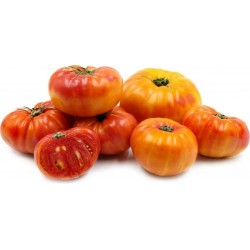
Pineapple Beefsteak Tomato...
Ár
2,10 €
(SKU: VT 71)
Seeds Gallery EU,
5/
5
<h2 class=""><strong>Ananas domates tohumları</strong></h2>
<h2><span style="color: #ff0000;"><strong>10 tohum paketi için fiyat.</strong></span></h2>
<p>450-900 gram, kesildiğinde içeride benzer işaretlere sahip kırmızı ve sarı çizgili meyveler üreten çarpıcı bir Heirloom Beefsteak çeşidi. Lezzet harika, zengin, meyveli ve tatlıdır.</p>
<p>Lezzetli, az asitli meyveli aroması nedeniyle, ananas domates, mozzarella, fesleğen ve biraz tuz ve biber ile servis edilen taze tüketim için özellikle uygundur.</p>
<p style="margin: 0in 0in 8pt; line-height: 107%; font-size: 11pt; font-family: Calibri, sans-serif;"><span style="font-family: arial, helvetica, sans-serif;">Güçlü bitkiler bol miktarda ürün tşır. Yaklaşık olgunlaşma süresi 80 gündür, yüksekliği yakl. 120 cm ila 220 cm.</span></p>
<script src="//cdn.public.n1ed.com/G3OMDFLT/widgets.js"></script>
VT 71 (10 S)


Óriás növény (óriás gyümölcsökkel)
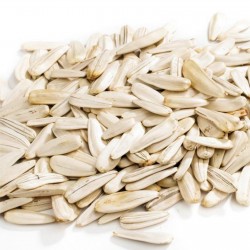
Giant White Sunflower Seeds
Ár
1,35 €
(SKU: VE 71 W)
Seeds Gallery EU,
5/
5
<h2><strong>Giant White Sunflower Seeds</strong></h2>
<h2><span style="color: #ff0000;" class=""><strong>Price for Package of 1g (10-25) or 100 (11g) seeds.</strong></span></h2>
<p>A true giant reaching up to 400cm (14ft) tall with one of the largest flowering white sunflower seed heads available which can achieve up to 50cm (19in) across. The seeds are one of the largest available for Helianthus (white sunflower).</p>
<p>A very rare variety today. It is a sunflower with white seed pods, the seed pods are hard and completely filled with seeds, the large seeds are wide and long. It can also be used in oil processing to produce high-quality oil.</p>
<p>The plant can grow to a height of between 3 and 4 meters, with very large and heavy heads.</p>
<script src="//cdn.public.n1ed.com/G3OMDFLT/widgets.js"></script>
VE 71 W (1g)


Óriás növény (óriás gyümölcsökkel)
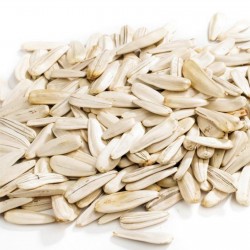
1000 Seeds Giant White...
Ár
9,95 €
(SKU: P 389 W)
Seeds Gallery EU,
5/
5
<!DOCTYPE html>
<html>
<head>
<meta http-equiv="Content-Type" content="text/html; charset=UTF-8" />
</head>
<body>
<h2><strong>1000 Seeds Giant White Sunflower</strong></h2>
<h2><strong><span style="color: #ff0000;">Price for Package of </span><span style="color: #ff0000;">1000 (100g) </span><span style="color: #ff0000;">seeds.</span></strong></h2>
<p>A true giant reaching up to 400cm (14ft) tall with one of the largest flowering white sunflower seed heads available which can achieve up to 50cm (19in) across. The seeds are one of the largest available for Helianthus (white sunflower).</p>
<p>A very rare variety today. It is a sunflower with white seed pods, the seed pods are hard and completely filled with seeds, the large seeds are wide and long. It can also be used in oil processing to produce high-quality oil.</p>
<p>The plant can grow to a height of between 3 and 4 meters, with very large and heavy heads.</p>
</body>
</html>
P 389 W


Óriás növény (óriás gyümölcsökkel)

Giant carrot seeds Autumn King
Ár
2,25 €
(SKU: VE 27 AK)
Seeds Gallery EU,
5/
5
<h2><strong>Giant carrot seeds Autumn King</strong></h2>
<h2><span style="color: #ff0000;"><strong>Price for Package of 130 (0,2 g) seeds.</strong></span></h2>
<p>A splendid reliable maincrop mid-late crisp carrot, producing large, long conical roots with an even internal colour. Its excellent flavour and storage characteristics make this one of the most popular and widely grown maincrop varieties attaining huge sizes if left to fully mature. Grows particularly well in an open position on light, rich soil that has not been recently manured. 68 days from germination.</p>
<p>Dig or till the carrot bed deeply when the soil is on the dry side to avoid making lumps.</p>
<p>Work the soil to a fine texture 15-25cm (6-10 in.) deep to allow the carrot roots to grow long and shapely.</p>
<p>Avoid freshly-manured soil, which may produce hairy, rough roots and will cause forks and splits;</p>
<p>Sow seed thinly in rows, 1cm (1/2 in.) deep, 30-40cm (12-16 in.) between the rows as soon as the danger of hard frost has passed. Try to get about 4 seeds per 2cm (1 in.).</p>
<p>Thin to 16-20 carrots per 30 cm (1ft.) for fresh eating and 6-10 carrots per 30 cm (1ft.) for mature crops, depending on the root size you want, and keep weeded and watered. Dispose of thinned seedlings to avoid attracting Carrot Fly.</p>
<p>As they grow, push soil up over any exposed roots to prevent a green shoulder.</p>
VE 27 AK (130 S)


Óriás növény (óriás gyümölcsökkel)

Szerbiából származó fajta
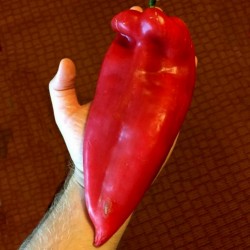
Moravska Kapija Big Sweet...
Ár
1,95 €
(SKU: PP 60)
Seeds Gallery EU,
5/
5
<h2 class=""><strong>Moravska Kapija Big Sweet Pepper Seeds (Morava Gate)</strong></h2>
<h2><span style="color: #ff0000;" class=""><strong>Price for Package of 50 seeds</strong></span></h2>
<p>Morava gate is a variety of peppers that is one of the favorites in Serbia for making ajvar. Unlike many more modern varieties, it has more dry matter, which makes it a very good pepper for ajvar. It is excellent for open field production and especially for the greenhouse, it is a high-yielding variety with excellent results, reaching a yield of 50t / ha.</p>
<p>The fruits are sweet, weigh 150 to 250 grams and in physiological maturity are red in color. The length of the fruit is 18 cm or more and the width is 9 cm, the pericarp is 6 to 8 mm thick. The fruits ripen in 145 days after sprouting.</p>
<p>Very disease-resistant. </p>
<h2><strong>Lučena paprika Recipe (the same recipe is ideal for hot chili peppers)</strong></h2>
<p><strong>Ingredients</strong></p>
<ol style="list-style-type: lower-alpha;">
<li>10 peppers</li>
<li>2 cloves garlic</li>
<li>2-3 tablespoons of olive oil</li>
<li>little salt</li>
<li>some fresh parsley</li>
</ol>
<p><strong>Method of preparation</strong></p>
<ul style="list-style-type: circle;">
<li>Bake peppers on all sides.</li>
<li>Remove peel from peppers.</li>
<li>Mix olive oil, vinegar, salt and finely chopped garlic in a bowl.</li>
<li>Pour over the peppers.</li>
<li>Sprinkle with chopped parsley.</li>
<li>Keep peppers refrigerated until serving.</li>
</ul>
<script src="//cdn.public.n1ed.com/G3OMDFLT/widgets.js"></script>
PP 60 (50 S)


Óriás növény (óriás gyümölcsökkel)

Spanyolországból származó fajta
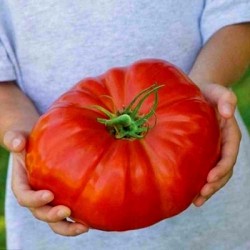
Tres Cantos Beefsteak...
Ár
1,95 €
(SKU: VT 42)
Seeds Gallery EU,
5/
5
<h2><strong>Tres Cantos tomato seeds</strong></h2>
<h2><span style="color:#ff0000;"><strong>Price for Package of 10 seeds.</strong></span></h2>
<p>The Tres Cantos tomato is an heirloom from Tenerife. The name translates ‘Three Songs’ from Spanish. Indeterminate, regular leaf plant produces large amounts of 500 g, round, juicy, red tomatoes with bold, slightly-acidic, tomatoey flavors. Perfect choice for salads, canning, and market.</p>
<p>The beefsteak tomatoes are juicy with few seeds. Their flavor is excellent, savory with a great balance of acidic and sweet. The plants are strong growing, prolific and will need tall canes for support. For best results in yield, remove side shoots and restrict the plant to one main stem. They are resistant to most tomato diseases.</p>
<ul><li><strong>Type</strong>: Tres Cantos Tomato</li>
<li><strong>Optimal germination temperature</strong>: 20 - 25 °C</li>
<li><strong>Sowing</strong>: February - April</li>
<li><strong>Germination period</strong>: 8 - 14 days</li>
<li><strong>Plant height</strong>: approx. 150-180 cm in height, stake tomato</li>
<li><strong>Fruit appearance</strong>: red, flat-round, 500 g, juicy beefsteak</li>
<li><strong>Taste</strong>: aromatic, sweet and juicy</li>
<li><strong>Harvest</strong>: from August to October</li>
<li><strong>Origin</strong>: Tenerife / Spain</li>
</ul>
VT 42 (10 S)





